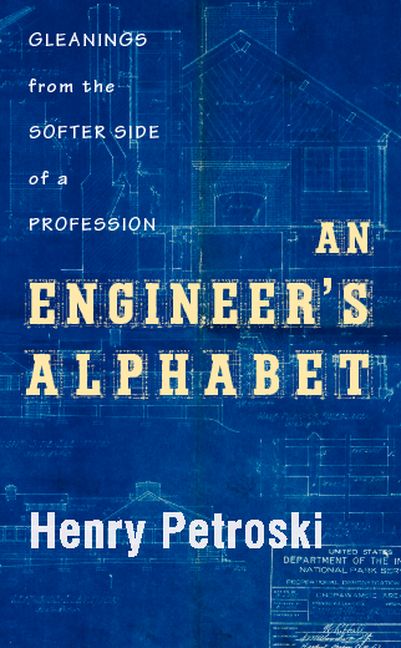Henry Petroski is an engineer who has written extensively about his profession. So it is no surprise that over the past decades he has amassed a broad range of facts on engineering, some of which while certainly interesting may not fit into the usual books. For example, did you know that hard hats were first worn during the construction of the Hoover Dam? Or that for the construction of the latter about 2.5 million cubic metres of concrete were used?
 Well, as with so many other facts, Wikipedia would also give you the answer to these questions. But that’s not the point. What Petroski has now done is to collect and curate interesting facts related engineering, and published them in alphabetical order as “An Engineer’s Alphabet“.
Well, as with so many other facts, Wikipedia would also give you the answer to these questions. But that’s not the point. What Petroski has now done is to collect and curate interesting facts related engineering, and published them in alphabetical order as “An Engineer’s Alphabet“.
There are plenty of gems to discover in the book. Many of them I would never have thought to even look up on the internet without being prompted, and in that respect the book is inspiring. I certainly enjoyed browsing through the text. Written by an American professor, it is more American Dream than Steampunk in character, although to be fair Isambard Brunel does appear in eight different entries. Herbert Hoover thirteen times. Robert Noyce only once, in passing.
The best way to go about reading this book is simply do flip through it and to read here and there. Or, to use the indispensable index at the end. Indeed, if £18.99 or $21.99 should be a bit too much of an expense it might make sense to consider the various ebook options, with the highly useful possibility of searching the book. On the Kindle or the Nook prices are about half of the hardcover ones. It doesn’t seem to be available on iBooks. Either way, if you love engineering and are interested in broadening in particular your historic knowledge of the profession, this book might be for you.
Reference:
Petroski, Henry. An Engineer’s Alphabet. Cambridge University Press, 2011. 268 pages. ISBN: 9781107015067. $21.99 / £18.99





February 19, 2012
1 Comment